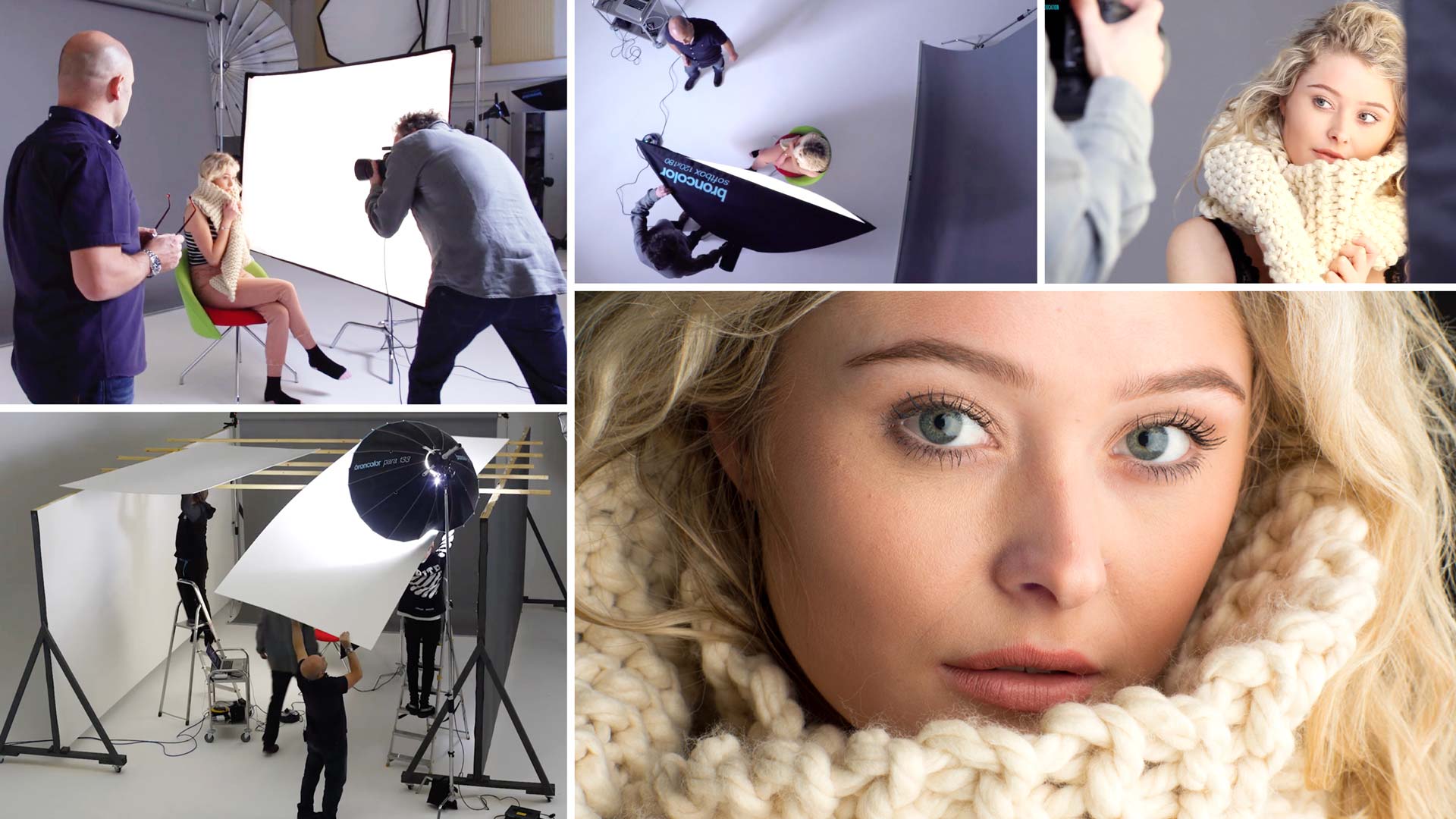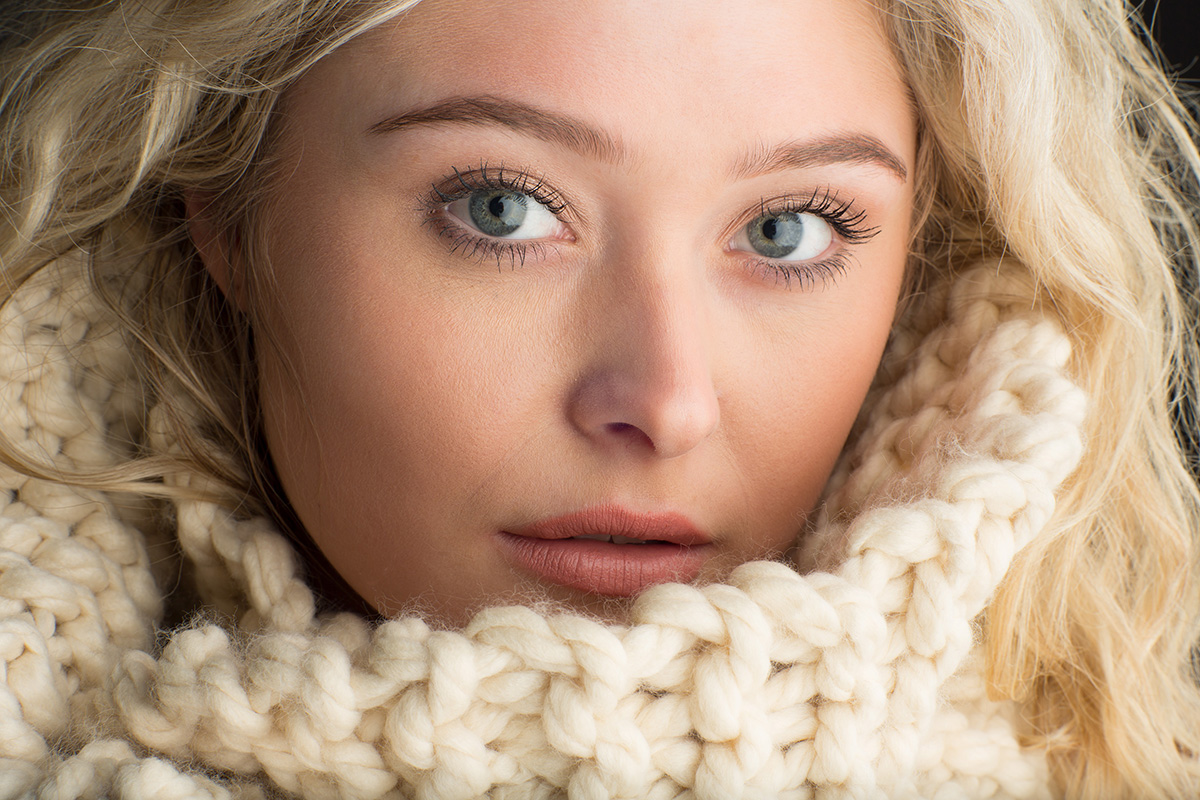Soft Single-Light Portrait
Softly does it in this simple portrait setup.
In this portrait photography class, Karl and Urs explain how to create the softest light possible. Using a common modifier, they explain the importance of position, and demonstrate how to position your light for maximum effect. They also demonstrate common mistakes photographers make when using softboxes, and show how to correct these mistakes.
The pair also discuss how this setup would work in a smaller studio, before going on to create their own to demonstrate exactly how this setup would work and how simple changes to your studio can make a big difference.
In this class:
- Portrait photography using a single light
- How to achieve soft light using a large light source
- Common mistakes when using a softbox
- Camera lenses for portraiture photography
- The inverse square law
- How to photograph in a small studio
Questions? Please post them in the comments section below.



Comments
Hi! Great tutorial! How do I know when to angle the light a bit down as opposed to parallel like it is here ?
The direction and position of the light influences where the shadows will be so you always consider the subject, the mood and the emotion you want to convey. Generally on people slightly down means the light looks more natural but here the light is so close it is coming from down and the side.
Oh my God, this video is brilliant. I’ve learnt so much in 19 minutes. I’d have never dared to bring the softbox this close. Thanks Karl!
Thanks Mark, make sure you watch chapter 1 of this course too.
Hi Karl , this tutorial is very helpful for me, But I am still confuse with the softbox that you using on that video , did you using HSS with triger combine with monolight? because the softbox is so bright while strobes blinking . Sorry for this question, best regards yato
Hi Yato, there is only the softbox, the flash is the softbox it is inside the softbox it is part of the studio lighting? Please see this chapter https://visualeducation.com/class/types-of-studio-lighting/
Hi Karl
Happy holidays to you and your staff!
Does Evie have an instagram or twitter?
Thx again.
Billy
A Canon 2x Extender is used. Two questions. Is an extender the same as a Canon Teleconverter? And why would you not just use a longer lens? Not sure about this.
Thanks,
David
Hi David,
1. Yes it is the same
2. I don’t have a longer lens as the very good ones cost a lot of money to obtain the necessary quality and only really worth it if you do a lot of long lens photography such as sports or wildlife.
Cheers Karl.
Hi Karl,
These tutorial are as good as it gets, really! Wonderful stuff.
A quick question: when using the Siros 800 L, I noticed there’s a huge lag with the shutter i.e. I press, and it will take the photo a full second later (if not more). Is this normal? I shoot Nikon D810.
Seems excessive to me…
Thanks,
Enrico
Hi Karl, thank you very much for your lessons! Very interesting! I have a little question. I only have 60×60 sorft boxes with my Broncolor kit. Is it possible to have the same result with a softbox 60×60 + a diffuser? For now I can’t buy a Big Broncolor Softbox… or maybe I can make something by myself?
Hi Anastasia, If you use a large diffuser panel in front of your 60×60 then yes. It’s all about creating the biggest light panel or softbox as close as possible to the subject. You will also see variations on this in the other chapters.
Thank you Karl!
Hello Karl!
I did the following portraits on the basis of your valuable advice:
[images no longer available]
I’m learning from you so you can show me how you work.
Thanks!
Hi Attila, very good and a stunning model too!
Hi Karl. If you have time, I was wondering if you could tell me what the photographer is doing when focusing on the model, around 9:20 in the vid? It looks like he aims a little higher and then moves the camera down a smidge before taking the shot. Why is he doing that?
Hi Susan, he’s locking the focus on the models eyes with the central focusing point and then recomposing the shot so her eyes are not in the centre of the picture.
Thank you! Great lesson.
Hello Karl!
Thank you for your job!
Its worth every penny.
amazing demonstration… thanks
Karl,
I’ve noticed you seem to enjoy shooting with your flash on manual, however, do you ever use TTL for portraits? Quick business headshots possibly?
Hello Karl , thanks for all the great classes .
Do you have any idea if the flash damage the eyes ?
And if putting the flash closer to the model is damaging more her eyes ?
Thanks , I am modeling since 22 years and it is always a question i had in mind when the photographer was putting the light so close.
Hi Camille, if you have a very powerful flash (1600J or 3200J) and it is almost bare or with the standard reflector and you looked at it when it flashed then yes this could temporarily damage your eyes. Generally speaking when they have softboxes or umbrellas on the light is diffused so the intensity in the eyes is not as strong and i’ve not know any model who has had a problem.
Hey Karl. I am wondering what the other photographer (Ors?) was talking about after the set of close-in shots at around the 9:00 minute mark. He says something about the cropping of the frame and the model’s forehead. Does he want to lower the amount of forehead in the shots, or increase the amount of forehead in the frame? I just couldn’t quite hear what he was saying.
Is there a preferred amount of the forehead to include or a specific way to frame the face on extreme close-up shots like this ?
Really enjoying the lessons. I have taken pages of notes.
Take care.
Tony
Karl,
Such a valuable lesson on the size and distance of light. I still see some many photographers placing the softbox and other large lighting sources so far away.
This is invaluable stuff Karl, thank you! Do you think there is a way to shoot full length shots with a simple light setup in a small studio?
Hi Jitesh, yes of course there is as demonstrated in all of these ‘One Light’ setups!